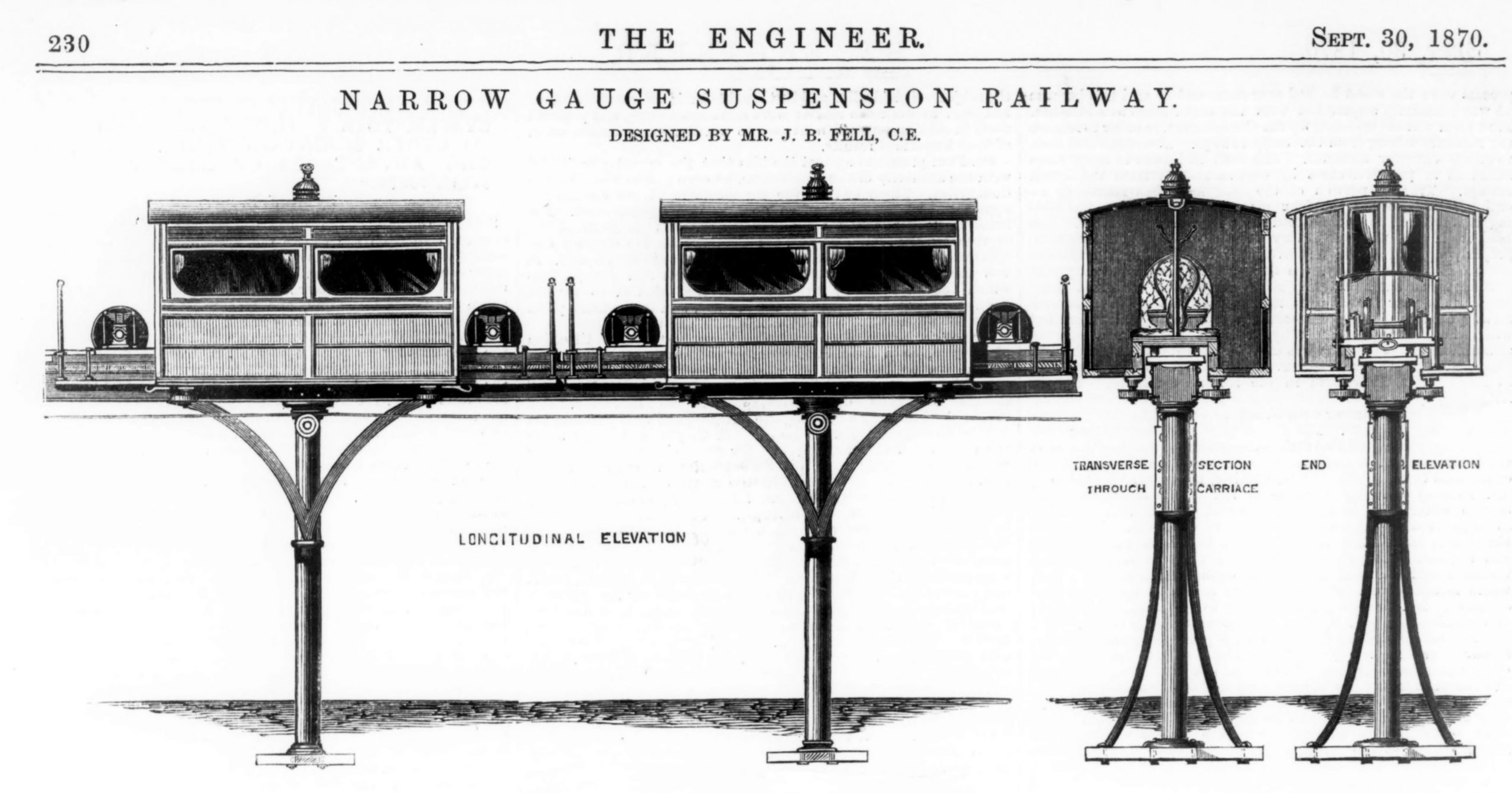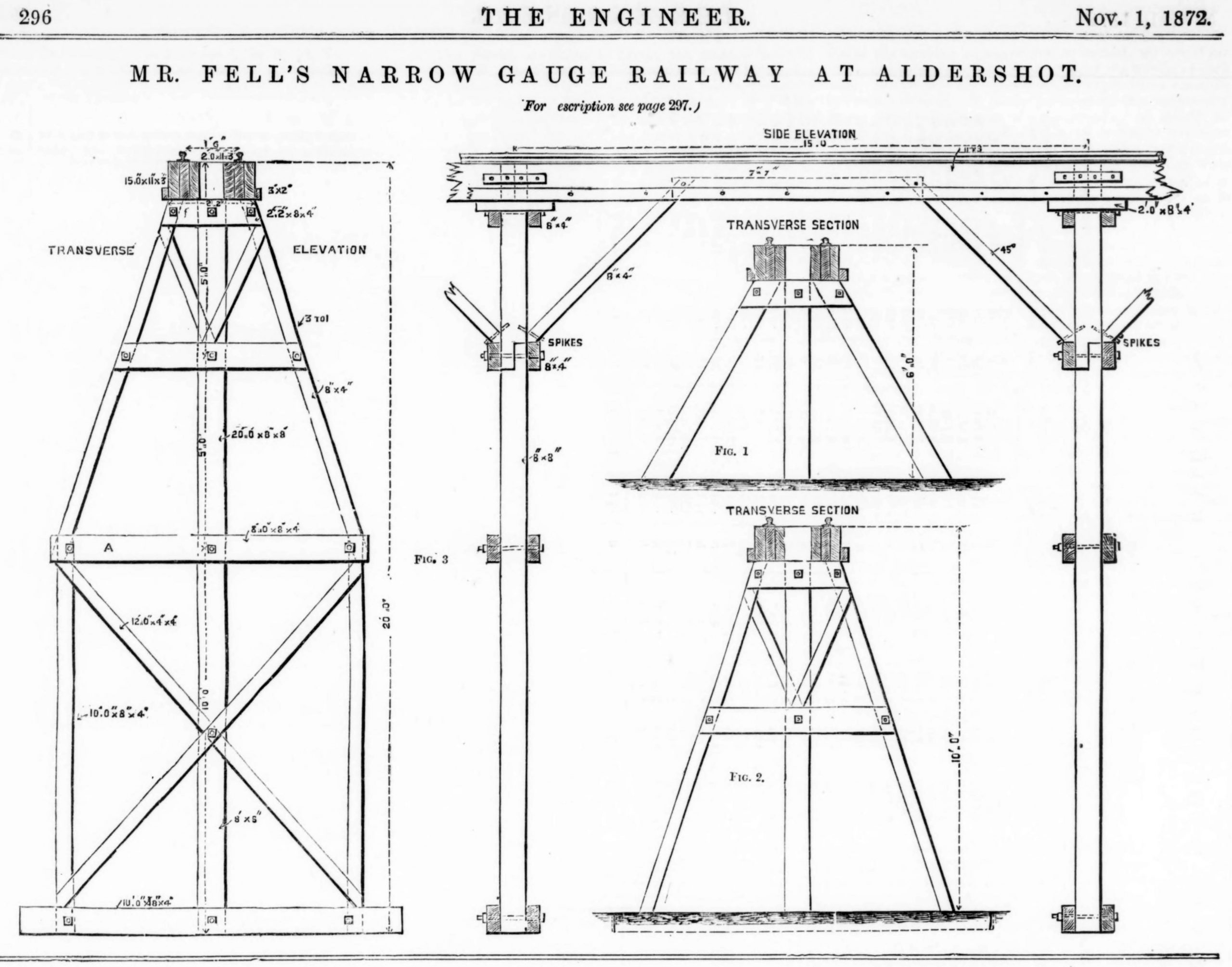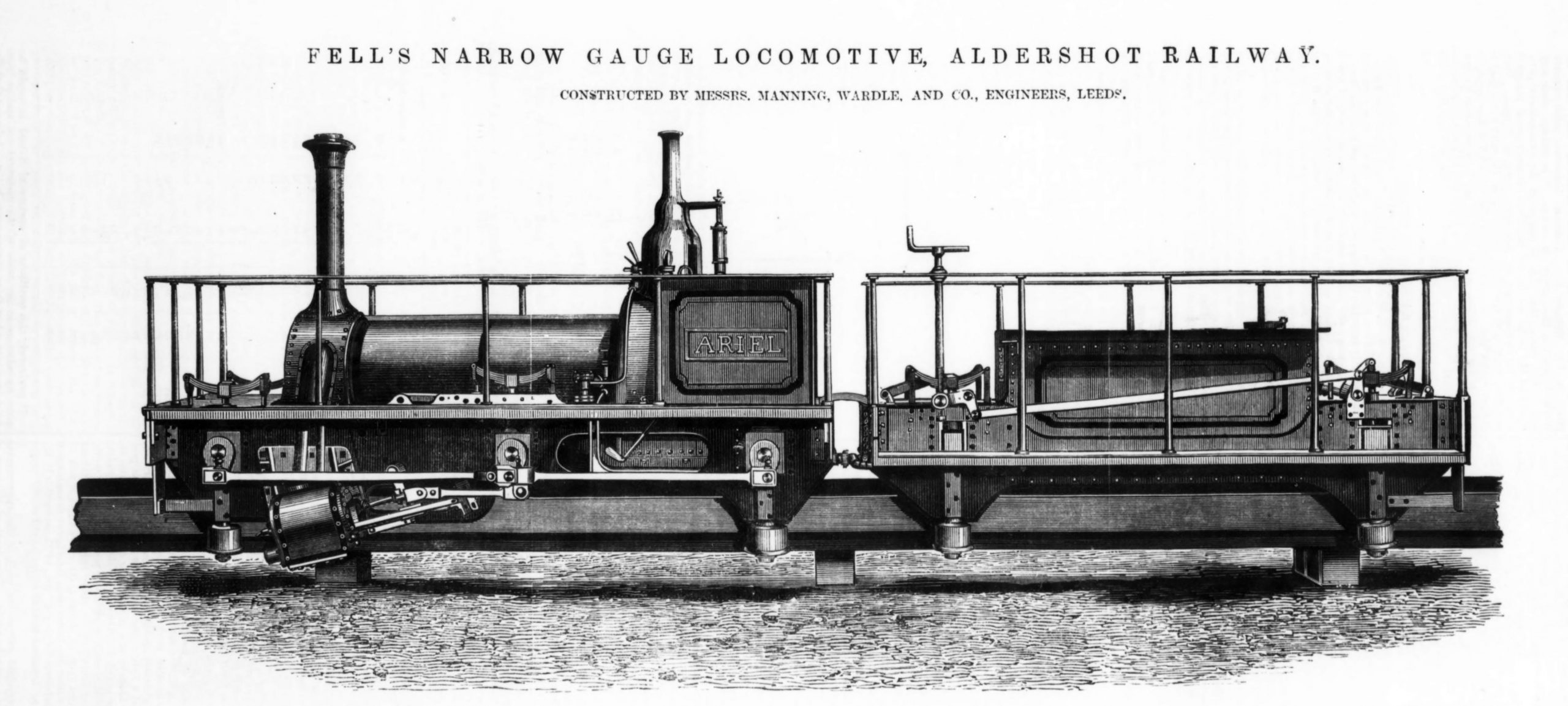One of the early proposals for a railway in Malta was promoted by Major Hutchinson, an officer of the Royal Artillery, recorded as being promoted in rank to take control of a bastion in Malta in 1872. His railway wasn’t conventional, in fact it was bizarre: a British Government experiment for a lightweight military railway to a system patented by John Barraclough Fell and tested at the army camp at Aldershot in the same year as Hutchison was dispatched to the Mediterranean. Hutchinson would have had direct experience of the Fell system from his stationing at Aldershot as Garrison Instructor before his dispatch to his new posting in Malta. Why he felt qualified after just a few months on the island to propose a railway isn’t known, but it would have been an exciting novelty at the time.
Tracks would be mounted on high steel trestles with a metre-gauge railway running along the top. The railway engine and carriages straddled the track like panniers over the back of a mule. and travelled something in the fashion of a monorail. The line would run between Valletta and Mdina and skirt the edge of Mosta along the way.

For whatever reason, Hutchinson, who’s in-depth knowledge of Fell’s patent system stemmed from his experience at Aldershot Army Camp, thought it would translate well into the Maltese landscape. It was a Major James of the Royal Engineers, one of the Maltese Government’s appointees to the Select Committee tasked with reviewing railway proposals, who interrogated Hutchinson’s plan in 1873. Perhaps aware of the genesis of the Fell system for military use, and perhaps no small bias in favour of another military man, James was quite complementary of this eccentric proposal, even taking the unprecedented step of supplementing Hutchinson’s submission with additional calculations of his own.
Fortunately, other members of the Select Committee recognised the flaws in this extraordinary proposal: What should happen if there was an accident and passengers were trapped or in panic suspended between 10 and 30 feet above the ground! As well as safety concerns, maintenance and train management using such a restrictive design must also have presented unassailable issues. Hutchinson’s faddish proposals were so poorly supported by any detailed or technical submission that ultimately they were rejected in favour of a more conventional railway line.



No responses yet